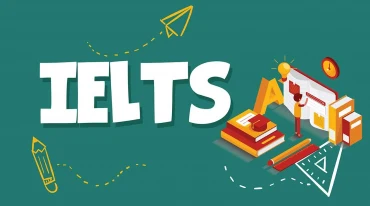
- 357 Lê Hồng Phong, P.2, Q.10, TP.HCM
- Hotline 1: 1900 7060
Hotline 2: (028) 3622 8849
Bài tập IELTS Reading - Gesture
Hãy cùng mình dành chút thời gian để luyện tập bài đọc phía dưới đây nhé! Có đáp án ở cuối!
A. gesture is any action that sends a visual signal to an onlooker. To become a gesture, an act has to be seen by someone else and has to communicate some pieces of information to them. It can do this either because the gesturer deliberately sets out to send a signal or it can do it only incidentally. The hand-wave is a Primary Gesture,because it has no other existence or function. Therefore, to make it a gesture, first, it should be clear and unambiguous. Others would be able to understand it instantly when it is shown to them. Nor may any component of a gesture, its force, its direction and amplitude of movement, be altered: otherwise, confusion or misunderstanding may occur.
B. Most people tend to limit their use of the term “gesture” to the primary form the hand-wave type—but this misses an important point. What matters with gesturing is not what signals we think we are sending out, but what signals are being received. The observers of our acts will make no distinction between our intentional primary gestures and our unintentional, incidental ones. This is why it is preferable to use the term “gesture” in its wider meaning as an "observed action". This can be compared to the ring of a telephone. The speed, tone and intensity of a telephone remain the same for any phone call. Even the length of time before being told that the number you are dialing is not answering, unless the caller hangs up, is the same.
C. Some gestures people use are universal. The shoulder shrug is a case in point. The shrug is done by bringing the shoulders up, drawing the head in, and turning the palms upwards so as to reveal that nothing is hidden. The shoulder shrug can also demonstrate submission or that what is being said isn’t understood. Another example is that an angry person usually expresses his rage by waving his clenched fist rapidly and forcefully. Surprisingly, you may find that people of different cultures will do the same when they are offended. That is to say, a commonly accepted gesture is shared by them. But if the way the hand is clenched changes, or the amplitude of force and the direction the first is waved alters, the gesture no longer means the same.
D. So, is gesture born with us or is it developed as we grow up? Recent research found that gesture is more like a spontaneous reaction when we face certain situations. And we just do that automatically. When people talk, they almost always gesture with their hands. This expressive movement can be coaxed into a choreographic form if observed carefully. People can practice spontaneous gesture by forming pairs, then observing and questioning each other. They then show the group what they have collected from their partners. It is fun to surprise a group using this technique. Because spontaneous gestures are often unconscious, people will sometimes be surprised to have their gestures mirrored back to them, saying “Did I really do that?”
E. The attention of research was also drawn to cultural themes. Researchers discovered that if a person has a good set of teeth, he or she would be prone to have a bigger smile than he or she should when good things happen. And if a person possesses a bad set of teeth, he or she would tend to have his or her mouth shut when being teased. And people’s reaction to the same joke also varies: some laugh out loud while others titter. However, this does not cause confusion and it helps to develop our “behavioural”, which is an important aspect of our identity. It was referred to as a
Gesture Variant, which indicates that individuals’ gesture production is a complex process, in which speakers’ internal and external factors and interactions could play a role in multi-modal communication.
F. During the research, an interesting phenomenon soon caught researchers’ attention. A hand purse gesture, which is formed by straightening the fingers and thumb of one hand and bringing them together so the tips touch, pointing upwards and shaping like a cone, carries different meanings in different countries. In Malta, it means heavy sarcasm: "you may seem good, but you are really bad.”; in Tunisia, it is against recklessness, saying "slow down”; in Italy, it means “What’s the matter?” or "What are you trying to say?”; in France, it means "I am afraid". However, this gesture has no clear meaning in American culture. And of course, the way the gesture is conducted is similar in different countries.
G. But what will happen if the gestures of different countries confront each other? The situation is further complicated by the fact that some gestures mean totally different things in different countries. To take one example, in Saudi Arabia, stupidity can be signalled by touching the lower eyelid with the tip of the forefinger. But this same gesture, in various other countries, can mean disbelief, approval, agreement, mistrust, scepticism, alertness, secrecy, craftiness, danger, or criminality. So people are faced with two basic problems where certain gestures are concerned: either one meaning may be signalled by different actions, or several meanings may be signalled by the same action, as we move from culture to culture. The only solution is to approach each culture with an open mind and learn their gestures as one would learn their vocabulary. These all require considerable skill and training and belong in a totally different world from the familiar gestures we employ in everyday life.
Questions 14-19
Reading Passage 2 has seven paragraphs, A-G.
Choose the correct heading for paragraph A-C and from the list of headings below.
Write the correct number, i-x, in boxes 14-19 on your answer sheet.
List of Headings
i The subconscious nature of gestures
ii The example of regional differences
iii The key factors of gestures
iv Sending out important signals
v How a well-known gesture loses its meaning
vi Performance in a specific setting
vii Recent research of Gesture Variant
viii Comparison to an everyday-use object
ix How will conflict be handled
x Individual deviation of cultural norms
Example Answer
Paragraph D i
14 Paragraph A
15 Paragraph B
16 Paragraph C
17 Paragraph E
18 Paragraph F
19 Paragraph G
Questions 20 - 22
Choose the correct letter, A, B, C or D.
Write your answers in boxes 20—22 on your answer sheet.
20 According to the passage, which aspect of the ringing of a telephone is compared with gestures?
A. The length of the ringing.
B. The unchanging sound of the ringing.
C. The telephone ringing intrudes upon our life.
D. The speed of ringing signals the urgency.
21 Which of the diagrams below shows the gesture “Hand Purse”?
22 In which country should the gesture "Hand Purse" be used with caution?
A. Malta
B. Tusinia
C. Italy
D. France
Questions 23 - 25
Do the following statements agree with the information given in Reading Passage 2?
In boxes 23-25 on your answer sheet, write
TRUE if the statement agrees with the information FALSE if the statement contradicts the information
NOT GIVEN if there is no information on this
23 Angry people are often in the same age range or group.
24 Personal physical characteristics may affect the gesture used.
25 A Gesture Variant can still be understood by the members of the same culture.
Question 26
According to the passage, what is the writer’s purpose in writing this passage?
Choose the correct letter A, B, C or D
Write you answer in box 26 on your answer sheet.
A. to clarify the origin of gesture-based communication
B. to promote the worldwide use of gestures
C. to investigate whether gesture use affects information content
D. to explain the concept of gesture
ĐÁP ÁN:
14. iii
15. viii
16. v
17. x
18. ii
19. ix
20. B
21. C
22. A
23. NOT GIVEN
24. TRUE
25. TRUE
26. D
THƯ VIỆN LIÊN QUAN

Reading là một trong bốn phần thi bắt buộc của bài thi IELTS, đây cũng được xem là phần thi thử thách nhất để chinh phục được band điểm cao. Hãy...

Bài viết cung cấp cho đọc giả Bài tập Reading part 3 - Chủ đề: Why fairy tales are really scary tales - Có đáp án

Bài viết cung cấp cho đọc giả Bài tập Reading part 2 - Chủ đề: The Desolenator: producing clean water - Có đáp án

Bài viết cung cấp cho đọc giả Bài tập Reading part 1 - Chủ đề: Henry Moore (1898-1986) - Có đáp án
Hoặc gọi ngay cho chúng tôi:
1900 7060
 | Chính sách bảo mật thông tin | Hình thức thanh toán | Quy định chung
| Chính sách bảo mật thông tin | Hình thức thanh toán | Quy định chung
Giấy chứng nhận đăng ký doanh nghiệp số 0310635296 do Sở Kế hoạch và Đầu tư TPHCM cấp.
Giấy Phép hoạt động trung tâm ngoại ngữ số 3068/QĐ-GDĐT-TC do Sở Giáo Dục và Đào Tạo TPHCM cấp